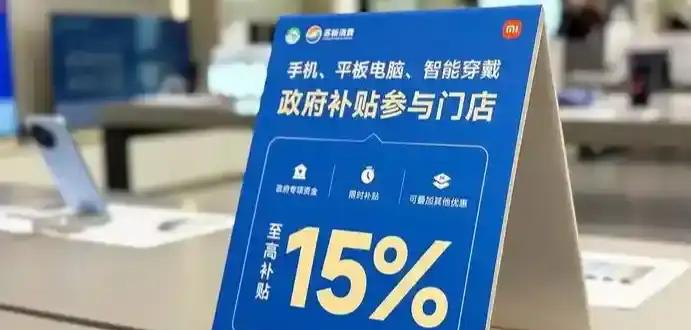China's New Consumer Subsidy Policy: Impact on Mobile Phones and Electronics Market
China announced new consumer subsidies for 2025, offering up to 500 yuan for smartphones under 6000 yuan and 2000 yuan for computers. The policy aims to stimulate domestic consumption and support industry development.

The Chinese government has unveiled a significant consumer subsidy program for 2025, marking a strategic move to boost domestic consumption and industrial upgrading. The policy, announced by China’s National Development and Reform Commission (NDRC), introduces notable changes to the subsidy landscape.
The mobile phone sector sees carefully calibrated subsidies. For smartphones priced under 6000 yuan, consumers can receive a 15% subsidy with a maximum cap of 500 yuan per device. This price ceiling effectively targets mid-range devices while excluding premium flagship models. The policy has varying implications for different manufacturers in the Chinese market.
For domestic brands like Xiaomi, Honor, and Huawei, the subsidy structure appears advantageous. These manufacturers typically offer competitive models in the 2500-3500 yuan range, allowing consumers to maximize the subsidy benefit. The policy particularly benefits their mainstream product lines that fall within the subsidy threshold.
Apple faces a different scenario. With the iPhone 16 series starting at 5999 yuan, just below the subsidy cap, the impact on their sales may be limited compared to previous regional subsidy programs that had no price restrictions. The policy seems designed to avoid disproportionately benefiting premium foreign brands.
The home appliance sector receives more generous support. Subsidies extend to 12 categories, including refrigerators, washing machines, and computers, with maximum subsidies of 2000 yuan. Energy-efficient models receive higher subsidy rates - 20% for top-tier energy ratings versus 15% for second-tier products.
Market response patterns are already emerging. Mid-range smartphone models have seen increased consumer interest, with manufacturers adjusting their pricing strategies to optimize subsidy benefits. Some brands have launched specific models priced strategically to maximize consumer value under the subsidy framework.
This policy represents a shift from previous regional subsidy programs toward a more structured, nationwide approach. The careful price targeting and subsidy caps reflect an effort to balance consumer stimulus with support for domestic industry development.
Looking ahead, the impact may extend beyond immediate sales numbers. The policy could influence product development strategies, with manufacturers potentially adjusting their product lines to better align with subsidy thresholds. It may also accelerate the upgrade cycle for consumer electronics while promoting energy-efficient technologies.
The structured approach to subsidies indicates a maturing policy framework aimed at sustainable market development rather than short-term sales spikes. For consumers, this means more predictable benefits and potentially better value in the mid-range market segment.